Launching and Shifting
Driving techniques & manners 7
Understanding the relationship of engine RPM and power
When launching from a standstill in sports driving, especially in races, the priority is transferring engine power to the road surface with the highest efficiency possible.
We’ll talk about the manual transmission (MT) here as an example. In manual transmissions, you need to operate the clutch. The clutch is a mechanism which connects and disconnects the engine power to the tires.
Normally, a clutch is connected slowly; but this does not apply at the start of a race. You would watch the tachometer (tach) and match the engine RPM to the target RPM with the accelerator, releasing the clutch so that it basically slams together.
What about the engine RPM? The engine output graph listed in car catalogues is a good reference. You want to find the engine RPM at the top of the torque graph and connect the clutch at an rpm just above that rpm. If there is no screeching sound from the tires when the clutch is connected, the RPM was too low. If the screeching sound does not subside, that means that the engine RPM was too high. The best is if you hear an initial screech and the car accelerates as fast as it can as you apply the accelerator (although in cars equipped with TCS, as explained in the previous chapter, the engine output will be regulated and you will not be able to launch like this.)
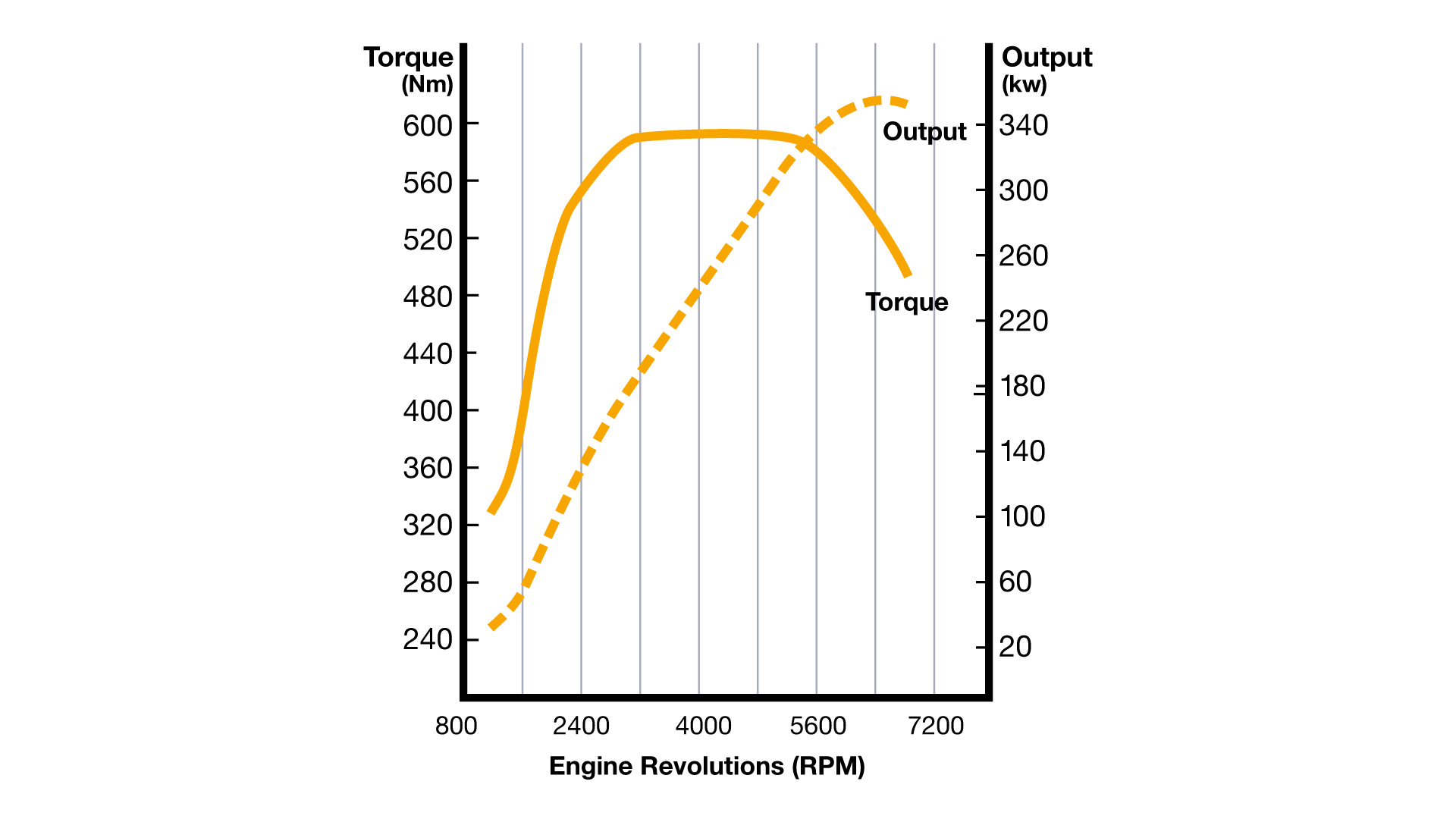
Fig. 7-1 This is an example of a graph showing the output curve of engine power (curve) and torque (solid line). The engine referred to in this graph produces maximum torque at around 3200-5600 RPM. This RPM range is referred to as the “torque band”
Once you have made a good start, the next priority is shifting. When you have the clutch depressed to shift up or down, your car is freewheeling with no engine power being transferred to the wheels and this will lead to time loss. You want to minimize the time needed for shifting as much as possible.
Shifting up is done by watching the RPM limit (redline) of your car on the tachometer. One thing to be careful of when shifting down during deceleration: if you select the wrong gear during downshifting, you may over-rev the engine (exceeding the allowed rpm of the engine) and damage it. Again, turn your attention to the output graph of the car catalogue. It is important to select a gear that will keep you at an engine RPM near the top of the torque curve after downshifting. If possible, it would be a good idea to know the speed ranges of each gear on your car.
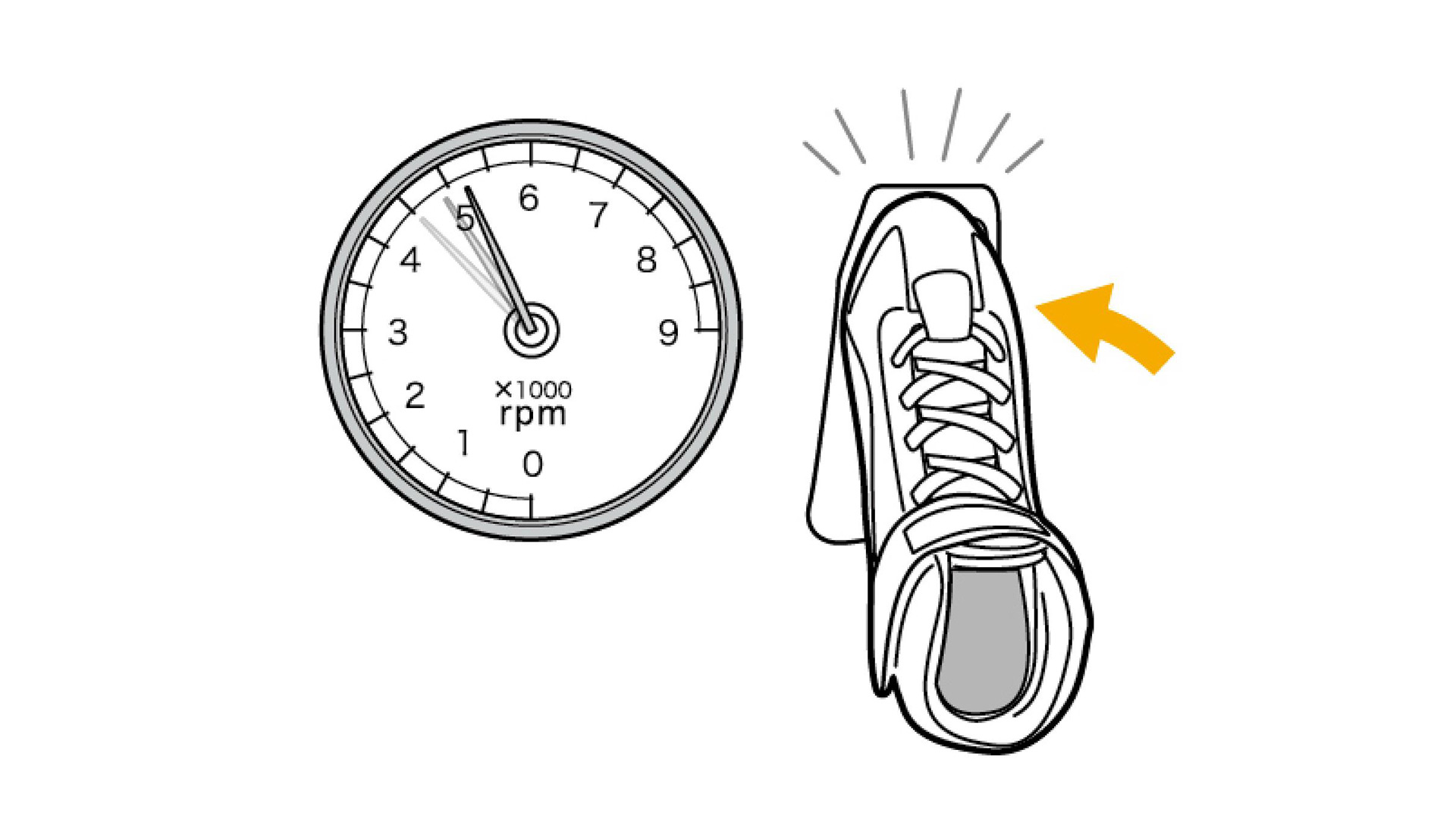
- Fig.7-2A Accelerate to raise the engine RPM to a slightly higher RPM than the maximum torque range of that car, then hold it there
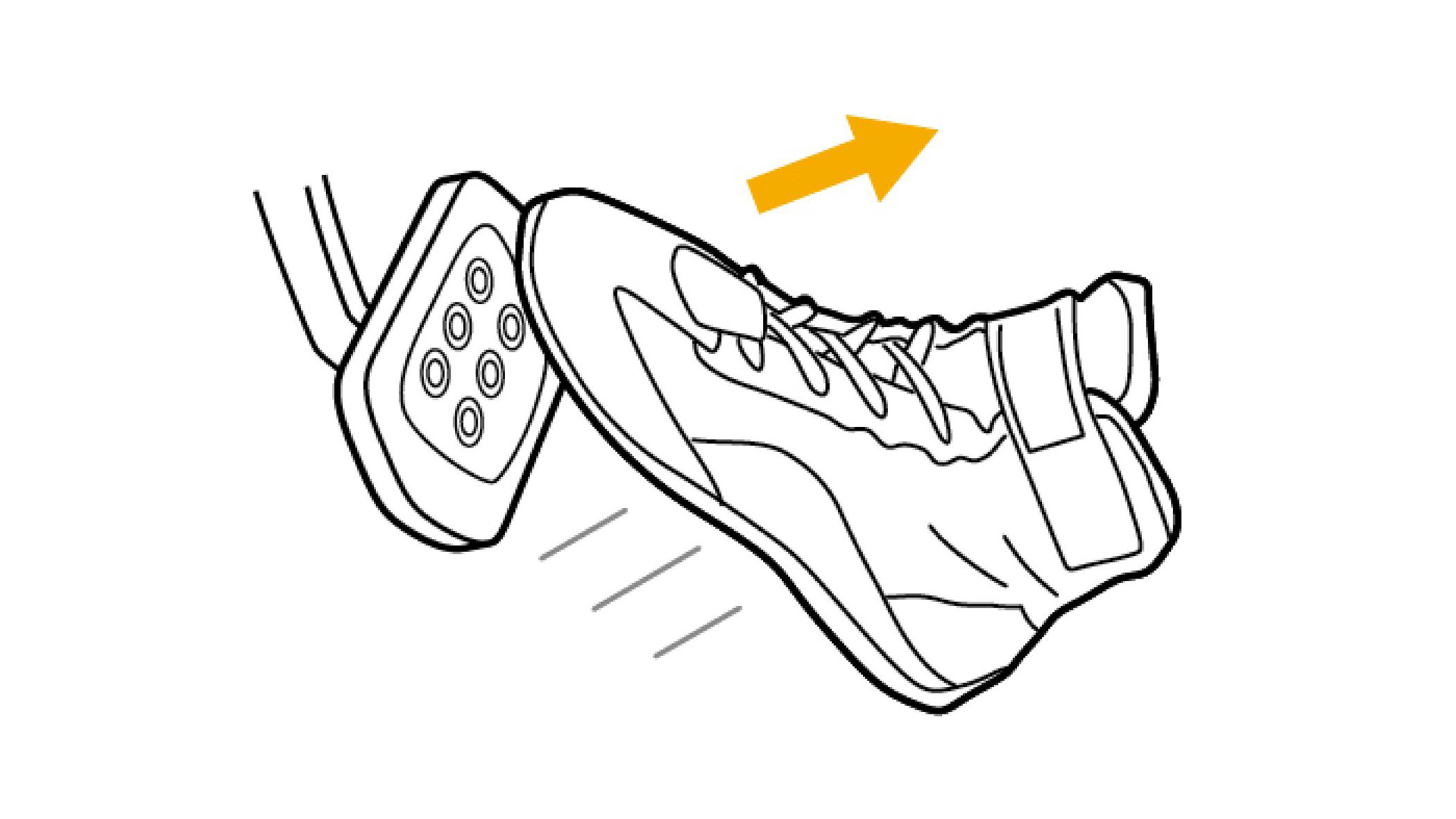
- Fig.7-2B Release the clutch quickly, so that it slams the engine power onto the drivetrain and tires. Adjust your acceleration according to the screeching noise coming from the tires
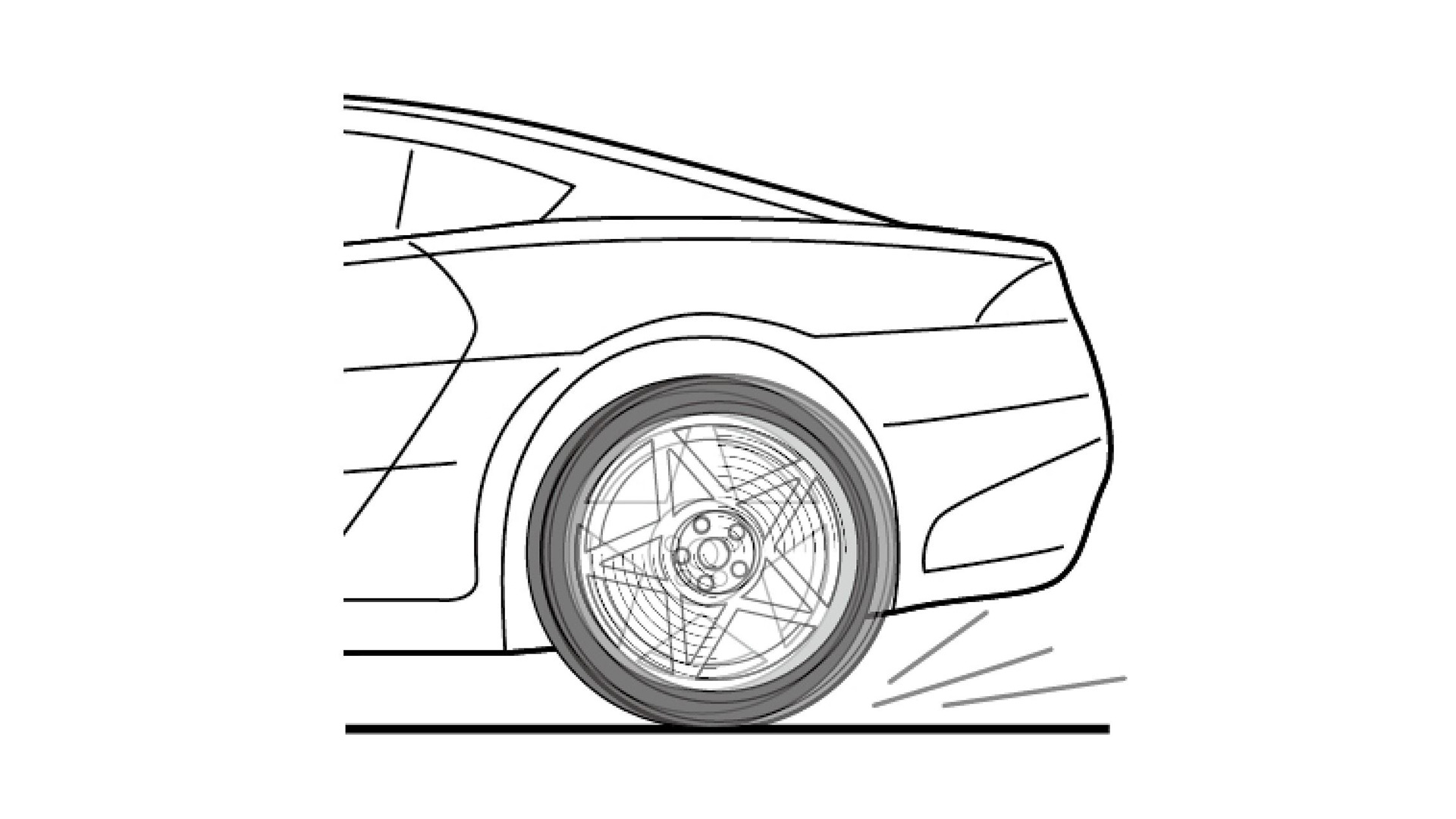
- Fig.7-2C Once you feel the tires grab the ground and launch forward, floor the accelerator
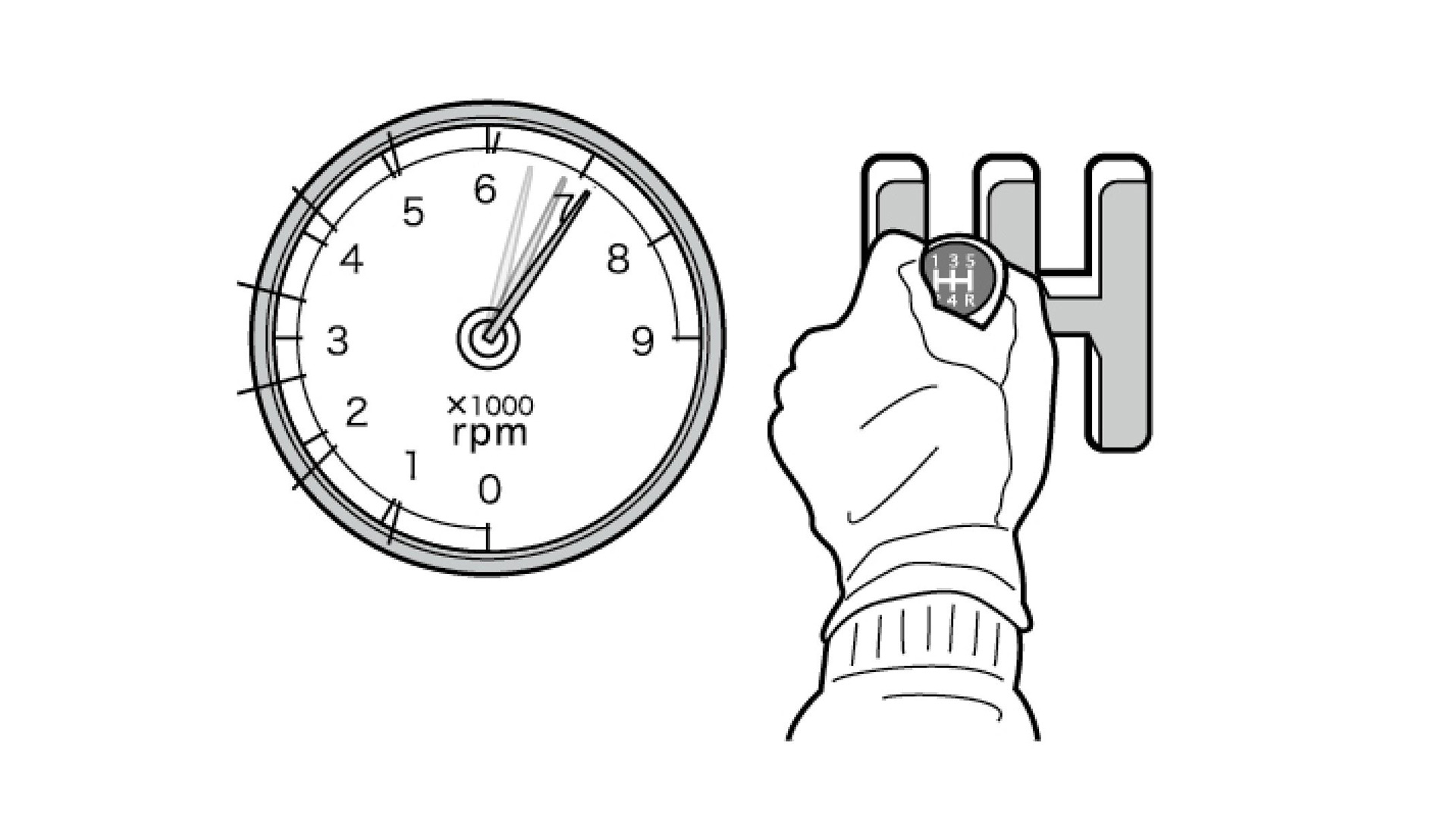
- Fig.7-2D Once the engine RPM reaches redline, simultaneously disengage the clutch and release the accelerate before shifting up a gear. Do this quickly
